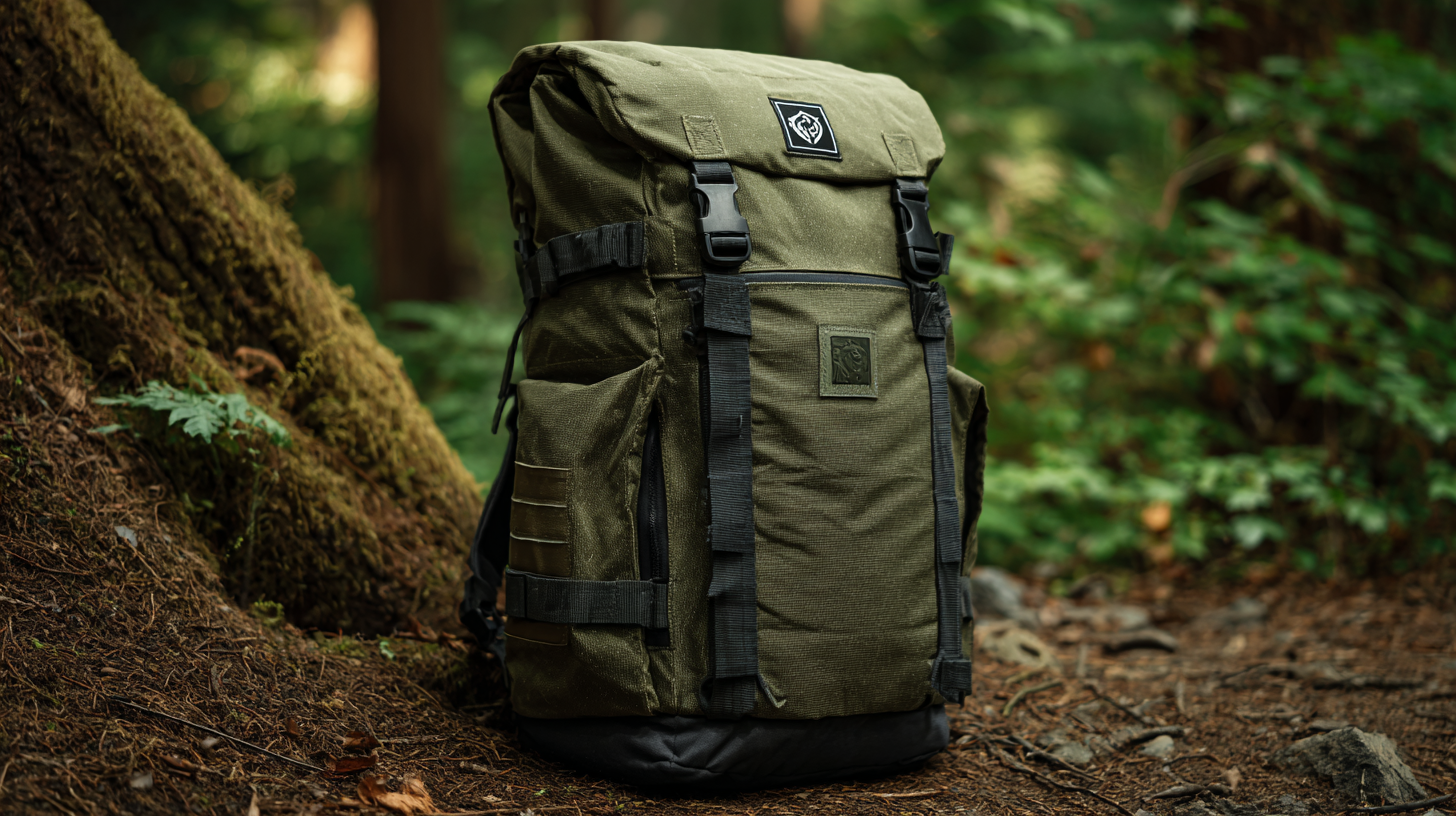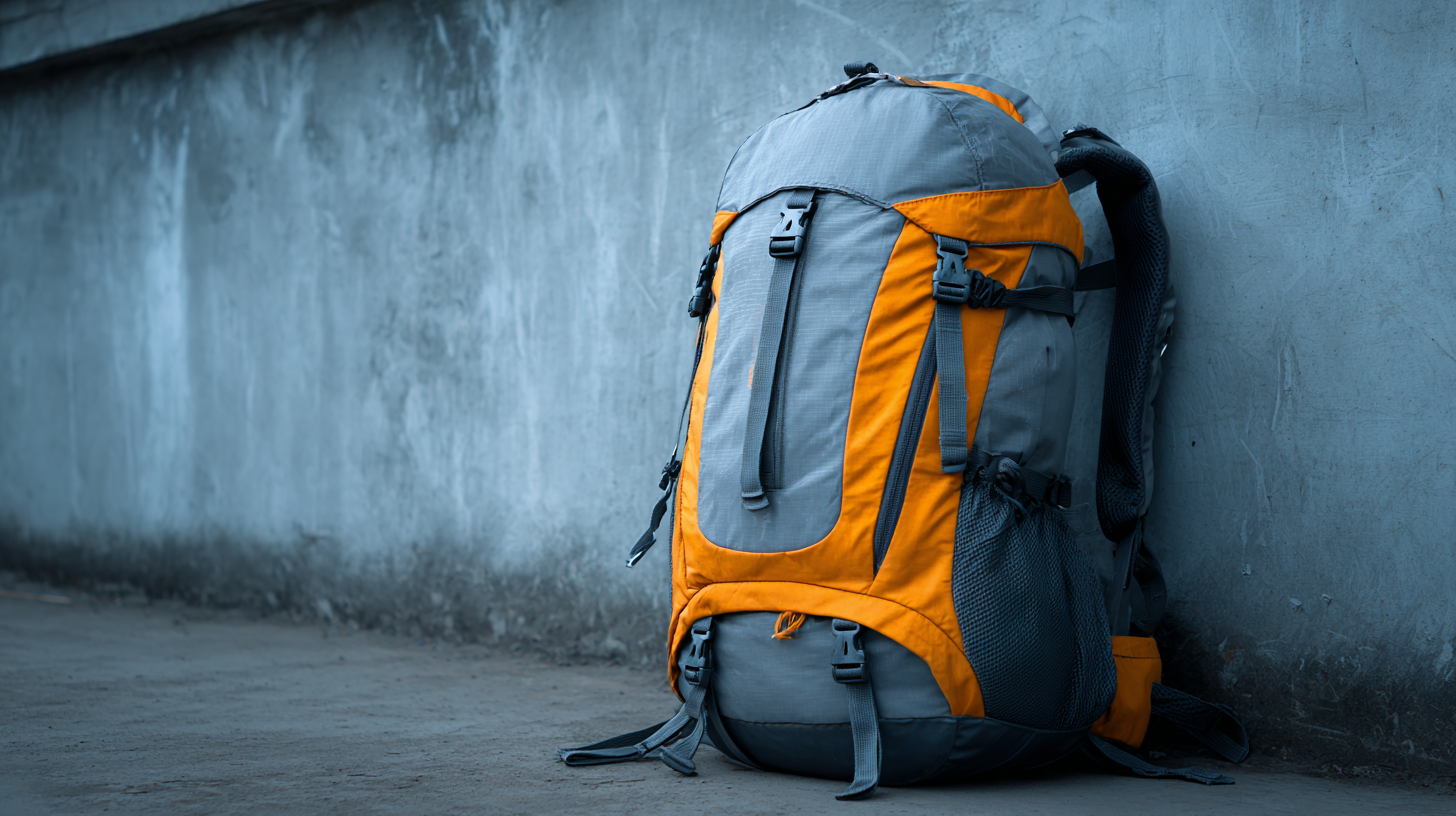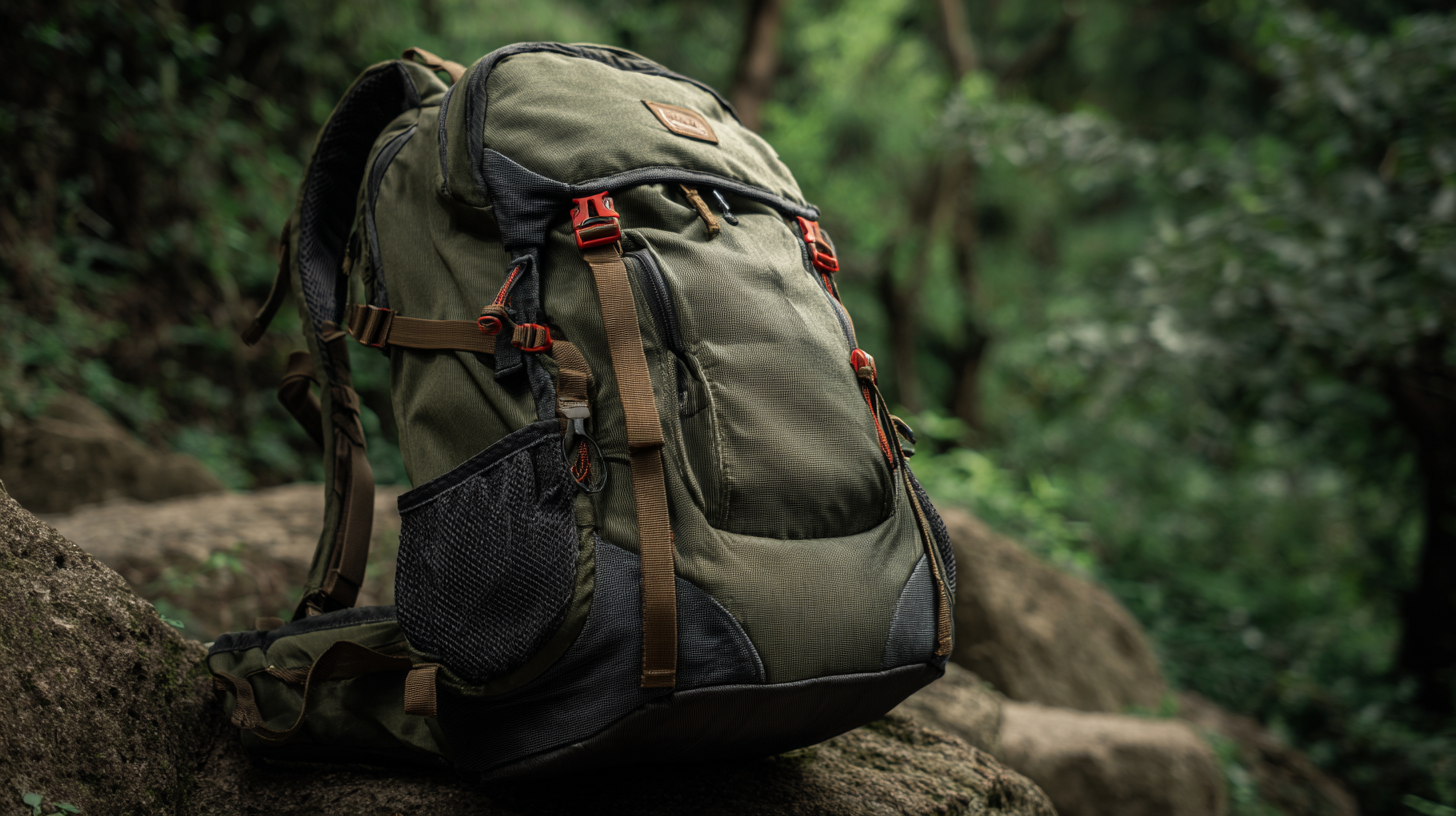Unlocking Comfort: A Comprehensive Tutorial on the Technical Specifications of the Best Rucksack Backpack
In today's ever-evolving outdoor landscape, finding the perfect gear to enhance your adventures is essential, and among the most critical pieces of equipment is the Rucksack Backpack. This versatile companion is designed to provide maximum comfort and functionality, whether you're embarking on a weekend hiking trip, commuting through urban environments, or traveling the globe. In this comprehensive tutorial, we'll delve into the intricate technical specifications that define the best Rucksack Backpacks available on the market. By exploring the important features such as capacity, material, weight distribution, and additional functionalities, you'll be equipped with the knowledge needed to make an informed decision tailored to your unique needs. Join us as we unlock the secrets to comfort and efficiency in choosing the ideal Rucksack Backpack for your next adventure.

Market Trends in Rucksack Backpacks: An Overview for 2025
The rucksack backpack market is projected to experience significant growth, with a recent analysis by Grand View Research estimating a compound annual growth rate (CAGR) of 4.9% from 2023 to 2030. This surge is driven by an increasing demand for multifunctional bags that cater to diverse consumer needs, from outdoor activities to urban commuting. As more people prioritize comfort and versatility, brands are focusing on innovative designs that incorporate ergonomic features and smart storage solutions, appealing to tech-savvy and environmentally conscious consumers alike.

Market trends indicate a shift toward sustainable materials, with 52% of consumers in a recent survey by Statista expressing a preference for eco-friendly products. As awareness of environmental issues heightens, companies are adapting by incorporating recycled fabrics and sustainable manufacturing processes into their designs. Additionally, the rise of online shopping has revolutionized how consumers explore and purchase rucksacks. A report by IBISWorld suggests that e-commerce now accounts for 25% of total sales in the outdoor gear industry, indicating that brands must enhance their digital presence and provide detailed product specifications to meet the evolving expectations of consumers preparing for their next adventure.
Key Technical Specifications to Look for in Top-Rated Rucksacks
When selecting the best rucksack backpack, understanding the key technical specifications is essential for comfort and functionality. According to the Outdoor Industry Association, an estimated 40% of outdoor enthusiasts prioritize weight and pack comfort when choosing their gear. The best rucksacks typically weigh between 2-4 pounds, balancing durability with ease of carry. Look for backpacks made from high-denier nylon or polyester, which offer superior abrasion resistance and waterproofing. A well-designed suspension system can significantly enhance comfort, with features such as load lifters and adjustable hip belts ensuring that weight is evenly distributed.
Tips: When trying on a rucksack, ensure that it fits snugly against your back and does not shift when you move. Adjust the straps and hip belt to see how they influence your comfort level. Remember, a good fit is critical; it can impact your hiking experience immensely.
Moreover, consider storage and organization. A top-rated rucksack often includes multiple compartments and pockets for easy access to gear. Reports reveal that an organized pack can improve outdoor efficiency by as much as 25%. Look for features like hydration reservoir sleeves and exterior attachment points that cater to your specific needs. The ideal backpack will not only hold your gear but also provide the necessary organization for a streamlined experience on the trail.
Tips: Pack the heaviest items close to your back and at the bottom of the rucksack. This helps maintain a low center of gravity, contributing to better balance and stability while hiking.
Unlocking Comfort: A Comprehensive Tutorial on the Technical Specifications of the Best Rucksack Backpack - Key Technical Specifications to Look for in Top-Rated Rucksacks
| Feature | Description | Importance |
|---|---|---|
| Volume | Measured in liters (L), indicates the total storage capacity. | Essential for determining how much gear you can carry. |
| Weight | The total weight of the backpack when empty, usually in grams (g). | Affects the overall load during hikes; lighter is often better. |
| Material | Fabric type, such as nylon or polyester, and its durability. | Determines resistance to wear, tear, and environmental elements. |
| Frame Type | Internal frame, external frame, or frameless design. | Impacts comfort and weight distribution while carrying. |
| Adjustability | Features like adjustable straps and hip belts. | Enhances comfort and fit for different body types. |
| Hydration Compatibility | Includes pockets or reservoirs for hydration systems. | Allows for easy hydration during activities. |
| Pockets and Compartments | Number and types of storage pockets (e.g., front, side). | Facilitates organization of gear and quick access to items. |
| Ventilation | Features like back panels and mesh to enhance airflow. | Helps to reduce sweating and increase comfort. |
| Load Lifters | Straps that pull the top of the pack closer to the body. | Enhances stability and comfort while moving. |
| Price Range | Typical price range for quality rucksacks. | Helps set budget expectations for potential buyers. |
The Importance of Ergonomics in Rucksack Design and User Comfort
When it comes to selecting the ideal rucksack backpack, the importance of ergonomics cannot be overstated. A well-designed backpack not only accommodates your gear but also ensures that your body is supported in a way that minimizes discomfort during prolonged use. Ergonomic features, such as adjustable straps, padded back panels, and proper weight distribution, are essential elements that can significantly improve user comfort. A rucksack with a tailored fit reduces the risk of strain and injury, making your outdoor adventures more enjoyable.
Moreover, the design of a rucksack should encourage natural movement. Features like a ventilated back system help to reduce sweat buildup, while anatomical adjustments in shoulder and hip straps allow for more dynamic movement and stability. This is particularly crucial for those who trek long distances or engage in rigorous activities. By prioritizing ergonomics in rucksack design, manufacturers not only enhance comfort but also promote better posture and overall well-being for users, ensuring that their journeys are as comfortable as they are exciting.
Material Innovations: Durability and Weight Considerations in 2025
In 2025, the evolution of rucksack backpacks lies significantly in the innovations surrounding materials that emphasize both durability and weight. Modern backpack manufacturers are increasingly utilizing advanced synthetic fabrics that not only provide exceptional weather resistance but also reduce overall weight. Materials like ripstop nylon and Dyneema are becoming standard choices, offering a perfect balance between strength and portability. This trend enables adventurers to carry their essentials with ease while ensuring their gear remains intact and accessible.
**Tip:** When selecting a rucksack, look for brands that emphasize their material technology. Investigating the fabric's denier and waterproof ratings can provide insight into the durability and protection the backpack will offer during your outdoor trips.
Additionally, sustainable materials are gaining traction in the industry, catering to environmentally-conscious consumers. Recycled fabrics and eco-friendly manufacturing processes are becoming more common, appealing to those who prioritize their ecological footprint. These innovations not only contribute to a lighter load but also enhance the longevity of the backpack.
**Tip:** Always check for certifications, such as the Global Recycled Standard, which can assure you that the materials used are environmentally friendly while still meeting performance standards.
Consumer Preferences: Data-Driven Insights into Backpack Features and Styles
When it comes to choosing the perfect rucksack backpack, consumer preferences play a pivotal role. Recent data-driven insights reveal that comfort and functionality are at the forefront of buyers' minds. Features such as padded shoulder straps, adjustable sternum straps, and breathable back panels are highly sought after. In fact, surveys indicate that over 70% of users prioritize these comfort elements when making their purchasing decisions. These specifications not only enhance the user experience but also cater to long treks and daily commutes alike.

Moreover, style is increasingly influencing consumer choices in the backpack market. With a myriad of designs available, from sleek urban aesthetics to rugged outdoor styles, buyers are looking for products that reflect their personal identity while still offering practicality. Findings show that color options and overall design appeal significantly impact sales, as customers often seek backpacks that complement their wardrobe. This fusion of comfort and style underscores the necessity for brands to innovate and adapt to meet the evolving tastes of their clientele, ensuring their backpacks not only perform well but also align with consumer lifestyle choices.